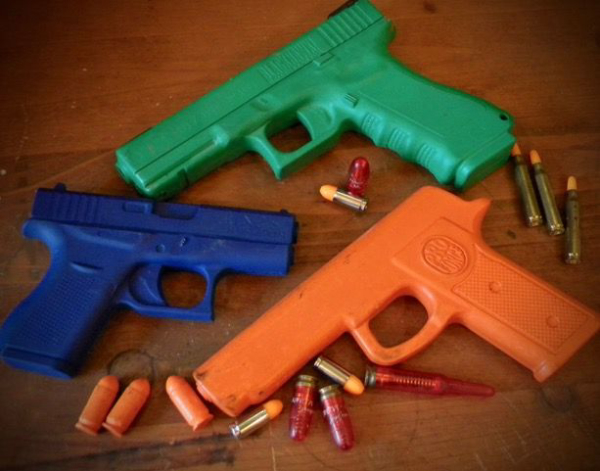Today's feature is from our companion service, The Tactical Wire.

Anyone involved in firearms – manufacturers, retailers and consumers – know there’s an ammo shortage. Supply for all the popular calibers is scarce, and when you can find some there are quantity limits on what you can purchase -- and it’s expensive. New shooters can’t get ammo, and those who do have some inventory don’t want to shoot what can’t be replaced. However, there is hope for improving your skills. Say it with me, “Dry fire practice.”
The ammo shortage is a new experience for first time buyers – there’s been a bunch of those in the last few months – and those who haven’t been firearms owners for very long. Most readers of the Wire have always known there are times like these, and prepared in advance by stocking up. Regardless of who you are, even for us who are “longer in the tooth,” it’s times like this when you’re hesitant to hit the range for live fire training. Nobody can predict when the shortage will ease up, or how expensive ammo will be when you can find it.
The cure for the shortage – which applies to plentiful times too – is dry practice. When it comes to past experts on the use of firearms, they all pretty much agreed that the vast majority of your practice should be “dry.” When people hear the term “dry fire practice” they often associate it with working on trigger control, developing a good smooth press on the trigger. This is important, and the key to mastering the trigger, but dry practice also applies to every other defensive/tactical skill.
Dry practice is cheap. Invest a few dollars in some dummy ammo, a dummy pistol – often called a “blue” or “red” gun – one of the new systems like the S.I.R.T. by NextLevel Training (https://nextleveltraining.com) or DryFireMag’s “reset” magazines (https://www.dryfiremag.com) and you’re set for hours, and years of dry practice.
Dummy ammunition allows you to practice weapon manipulations. This includes the administrative actions - loading and unloading – and the functional manipulations – reloading and clearing a stoppage/malfunction. You practice the admin actions so you can do it safely. The same skills used for these actions are used to reload and clear a stoppage; the ability to perform these actions under adverse conditions is mandatory.
The dummy or non-firing firearms let you practice drawing from concealment. This skill is the thing I see most lacking with students. When working repetitions on the presentation you should also be moving as you draw, which is something you can’t practice at most ranges.
And the newer generation of dry practice tools mentioned above let you work on the elusive “perfect” trigger press – and follow through, which includes resetting the trigger – which is mandatory for accurate shooting.
“Repetition,” as they say, “is the mother of skill.” There’s no substitute for learning. The very best way of getting these repetitions is through dry practice. Plus, the learning curve is steeper during dry practice then live fire. It’s good for both the experienced and beginners. Dry practice is the path to excellence, in good times – plenty of affordable ammo – and the hard times, which is now.
Tiger McKee is director of Shootrite Firearms Academy. He is the author of The Book of Two Guns, AR-15 Skills and Drills, has a regular column in American Handgunner and makes some cool knives and custom revolvers. Visit Shootrite’s Facebook page for other details.